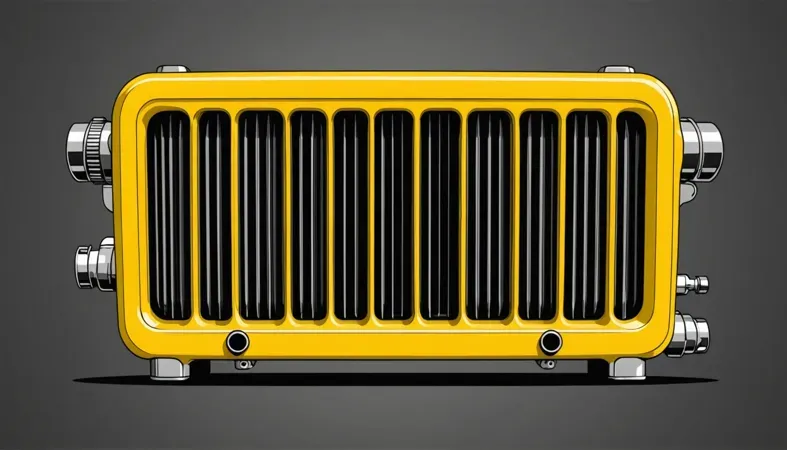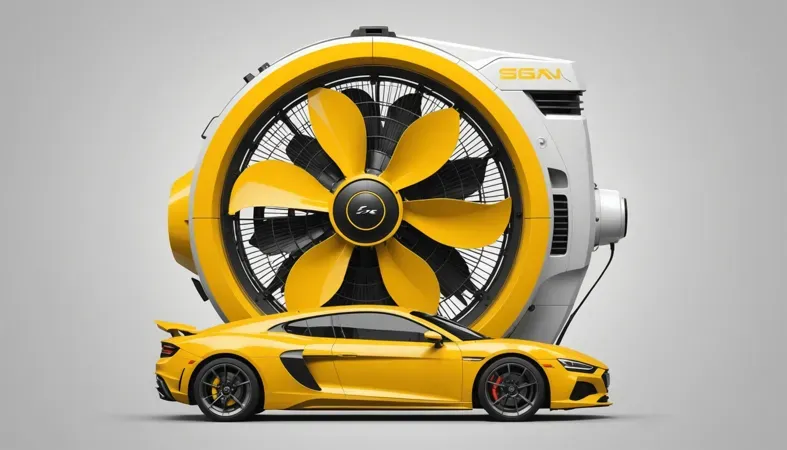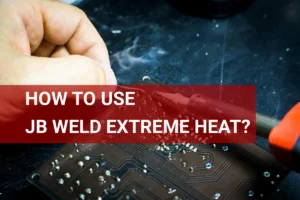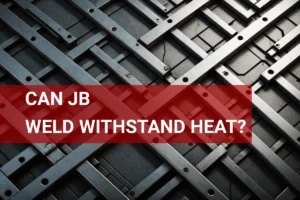Can You JB Weld a Radiator? A Guide to Repairing Leaks, Types, and Safety Tips
Published on: April 11, 2025 | Last modified: March 4, 2025
By: Mark Carter
A radiator is a device that dissipates heat from engines or buildings. It helps to keep things cool, preventing overheating.
I’ve been asked many times, can you jb weld a radiator? It’s crucial to know because radiators are key for any vehicle’s cooling system. In my experience, many folks rush in and try fixes that don’t hold up, ending up causing more damage.
In this article, I’ll cover what a radiator is, types of radiators that can utilize JB Weld, prerequisites before starting, steps to apply it, important safety tips, different JB Weld types for radiator repairs, factors impacting application, common issues, aftercare, benefits, typical JB Weld applications, and discuss some alternatives. You’ll learn how to repair a radiator and more, answering questions like can you use jb weld on a radiator.
Contents
- Can You JB Weld a Radiator?
- What is a Radiator?
- Types Of Radiators in Context Of JB Weld
- Before You Start (Prerequisites)
- Steps to JB Weld a Radiator
- Safety Tips
- Types Of JB Weld for Radiator Repairs
- Factors Impacting JB Weld Application
- Common Issues With Radiator Repairs
- Aftercare and Inspection Tips
- Benefits Of Using JB Weld on Radiators
- Typical Applications Of JB Weld
- What Are Alternatives to JB Welding a Radiator?
- Frequently Asked Questions (FAQs)
- Conclusion
- Additional Reading
Can You JB Weld a Radiator?
Yes, you can JB Weld a radiator. It’s fairly easy if the leak’s minor. Clean the area, apply JB Weld, and let it cure for 24 hours. This can save you costs on radiator replacements.
What is a Radiator?
A radiator is a heat exchanger that cools or heats a fluid through thermal conduction. It usually consists of metal fins that increase the surface area, aiding heat dissipation. Most vehicles use aluminum or copper radiators, which efficiently transfer heat from coolant—a mixture of water and antifreeze—at temperatures up to 100 °C (212 °F). With proper maintenance, a radiator can last over 10 years, but leaks can shorten that lifespan.
You might wonder about using J-B Weld on a radiator. I once had a small leak that needed a quick fix. I tried J-B Weld, and it made a noticeable difference, sealing it effectively for a time.
I’ve learned a lot about radiator repairs over the years, especially regarding leaks. Many people ask, “Can you fix a radiator leak with J-B Weld?” Yes, it’s common to use J-B Weld for quick repairs. Just remember that proper surface preparation is essential to ensure a strong bond.
Types Of Radiators in Context Of JB Weld
What types of radiators can be fixed with JB Weld?
Aluminum Radiators
Aluminum radiators are lightweight and efficient. You can use JB Weld on these radiators with caution. To fix a crack, clean the area, apply JB Weld, and let it cure for 24 hours for optimal strength.
Plastic Radiators
Plastic radiators are common in modern vehicles. Yes, you can repair them with JB Weld, specifically the WaterWeld product. Sand the area, mix the epoxy, and apply a thin layer over the crack. Allow it to dry thoroughly.
Brass Radiators
Brass radiators are durable and corrosion-resistant. You can successfully use JB Weld here as well. Clean the surface with a wire brush, apply JB Weld, and let it cure for at least 12 hours.
Stainless Steel Radiators
Stainless steel radiators provide excellent heat transfer and resistance. JB Weld works well on these types too. Grind the surrounding area to expose clean metal, mix JB Weld, apply it, and let it set for 24 hours.
Composite Radiators
Composite radiators combine different materials for efficiency. You can use JB Weld, especially the high-temperature variant. Clean the area, knead the epoxy, cover the crack, and wait for full curing according to the instructions.
So far we covered different radiator types in relation to JB Weld. Next, let’s look at the prerequisites for your project.

Before You Start (Prerequisites)
What do you need to get started?
- J-B Weld 50101 ClearWeld Epoxy: You’ll need J-B Weld ClearWeld, specifically the 50101 version. It cures quickly—about 5 minutes—and withstands coolant well.
- J-B Weld 8272 MarineWeld Epoxy: Consider MarineWeld, like the 8272 product. It’s waterproof and chemical-resistant, making it ideal for radiator repairs.
- J-B Weld WaterWeld: This is the WaterWeld option, specifically J-B Weld 8277. It’s great for wet surfaces and works well on metal and plastic radiators.
- Sandpaper (80-grit): You’ll need 80-grit sandpaper for surface prep, such as Norton’s 80-grit sheets. It cleans and roughens the radiator area for better adhesion.
- Clean Cloth: A clean microfiber cloth is essential. It removes dirt and grease, ensuring the adhesive bonds properly to the radiator.
That covers the prerequisites for using JB Weld. Let’s now take a look at the steps to JB Weld a radiator.
Steps to JB Weld a Radiator
Here are the steps to effectively repair a radiator using JB Weld. Follow them closely for the best results.
Clean the Radiator Surface
Start by cleaning the area around the leak. Use a wire brush to remove rust and dirt. A clean surface helps the JB Weld bond effectively. If there’s oil, use a degreaser to eliminate residue.
Prepare the JB Weld Mixture
Mix equal parts of epoxy from the JB Weld kit. This is typically a two-part system: resin and hardener. Use a small container and a stick or spatula for mixing. Blend it thoroughly for about 1 minute to ensure a proper chemical reaction.
Apply the JB Weld
Dab the mixed JB Weld onto the leaky section with a putty knife or a suitable applicator. Cover the area completely, filling any cracks or holes. Use enough to overlap the edges of the repair area by at least 1 cm (0.4 Inches) to add extra strength to your fix.
Allow the Weld to Cure
Let the JB Weld cure for at least 4-6 hours, but 24 hours is ideal for full strength. Higher humidity can slow curing, so keep that in mind. Ensure the area remains undisturbed during this time for the best bond. Mastering various welding techniques, such as welding uphill, can significantly enhance your skill set.
That covers the procedure for JB Welding a radiator. Let’s now take a look at essential safety tips.
Safety Tips
Let’s quickly explore crucial safety precautions for using JB Weld on a radiator.
- Protective Gear: Always wear gloves, goggles, and a mask for protection. I recommend 3M P95 respirators, which filter out harmful fumes.
- Proper Ventilation: Ensure good airflow in your workspace to avoid inhaling toxic fumes. Open windows or use fans to achieve this.
- Temperature Awareness: JB Weld needs a working range of 10°C to 32°C (50°F to 90°F) for the best bond. Keep an eye on the shop thermometer!
- Dry Surface: Make sure the radiator surface is clean and dry before applying JB Weld. Moist metal won’t bond well, trust me!
Always prioritize safety when working; it could save you from serious harm!
Types Of JB Weld for Radiator Repairs
Let’s look at the different types of JB Weld: Standard JB Weld, High Temperature JB Weld, Steel Reinforced JB Weld, Plastic Fusion JB Weld, and Clear JB Weld.
Standard JB Weld
Standard JB Weld is a two-part epoxy that hardens into a strong bond. It’s rated for temperatures up to 300°F (149°C) and offers a robust repair for various leaks. This type is commonly used for minor fixes on radiators, making it a favorite among DIY enthusiasts.
High Temperature JB Weld
High Temperature JB Weld withstands extreme heat, up to 550°F (288°C). It’s ideal for demanding applications, such as repairing engine components or hot areas of the radiator. If you’re dealing with high-stress situations, this type excels.
Steel Reinforced JB Weld
This version contains real steel for added strength, providing a durable bond that can handle pressure and impacts. When fixing heavy leaks or cracks in your radiator, Steel Reinforced JB Weld is a solid choice. In my experience, it delivers a strong repair that lasts under significant stress.
Plastic Fusion JB Weld
For plastic radiators, Plastic Fusion JB Weld is the best choice. It’s specifically designed to bond to plastics, ensuring the weld adheres well to the material. It’s perfect for repairs where you might ask, “Can you use JB Weld on a radiator?”
Clear JB Weld
If aesthetics matter, Clear JB Weld is an excellent option. It dries clear, so it won’t look messy on your repairs. While it’s not as strong as the others, it still holds up for light-duty fixes.
We’ve wrapped up the various types of JB Weld for radiator repairs here. Next up, we’ll look at factors affecting JB Weld application.
Factors Impacting JB Weld Application
What factors influence whether JB Weld is a viable solution for your radiator?
Material Type
The radiator material affects JB Weld’s adhesion. Aluminum radiators need a special aluminum formulation, while plastic ones require JB Weld’s plastic-specific product.
Temperature Conditions
Temperature impacts the curing process of JB Weld. The optimal application range is between 10°C (50°F) and 37°C (100°F) for maximum bond strength.
Surface Cleanliness
Make sure the surfaces are clean. Grease, dirt, or rust will prevent proper adhesion, leading to radiator leaks.
Curing Time
Curing time is crucial for achieving a strong bond. JB Weld typically cures in 4-6 hours for a solid hold and reaches full strength in 15-24 hours.
Environmental Factors
Humidity and airflow can affect JB Weld’s curing. High humidity may extend curing times, while good airflow speeds it up, so consider your work environment.
That covers the elements affecting JB Weld application. Let’s now take a look at typical problems encountered during radiator repairs.
Common Issues With Radiator Repairs
Here are some common issues that arise during radiator repairs.
Inadequate Surface Preparation
This issue results from poor surface cleaning. Rust or dirt can lead to weak bonding. Sand the surface thoroughly before repair.
Poor Adhesion to Plastic
Use JB Weld specifically designed for plastics. Many radiators are mostly plastic, so a mismatch can cause leaks.
Incompatibility With Coolant
Verify the radiator’s coolant type. Some sealants don’t perform well with certain coolants, leading to leaks or degradation. Choose the appropriate sealant!
Temperature Sensitivity
Repairs must withstand high temperatures. If it’s too cold or hot, bonds may weaken. Make repairs at room temperature (Around 20°C or 68°F).
We covered frequent radiator repair problems, their causes, and solutions here. Next, we will cover aftercare and inspection tips.
Aftercare and Inspection Tips
Here’s essential advice on aftercare, inspection, and expert tips for your repaired radiator.
Aftercare Tips
After securing the repair with J-B Weld, avoid filling the radiator for at least 24 hours. This lets the adhesive cure fully at ideal temperatures of 15-27°C (60-80°F). Additionally, check the PSI (Pounds Per Square Inch) pressure and ensure it’s below the recommended 15 PSI (103 Kpa) during initial use.
Inspection
Inspect the repaired area closely after the first week of use. Look for any signs of moisture or discoloration around the joint—these could indicate a failing bond. I check it every week with a cotton swab and a product like CRC Brakleen for contaminants that may affect adhesion.
Expert Tips
I recommend waiting a full 48 hours before applying pressure or heat after the J-B Weld sets. Ensure all seams are lightly sanded to reduce stress points after initial curing. For differential thermal expansion, consider using a product like Permatex High Performance to stabilize any flex in larger radiators. Regular checks with a proper torque wrench set to the manufacturer’s specifications prevent future issues.
Benefits Of Using JB Weld on Radiators
The biggest benefit of using JB Weld on a radiator is its strong bonding capability. It can withstand high temperatures, making it ideal for radiator repairs.
Moreover, it’s quick to apply, affordable, and readily available. You can fix leaks without removing the radiator, save on costly repairs, and prevent fluid loss.
Typical Applications Of JB Weld
People often use JB Weld for quick radiator fixes, but it has many other uses, including:
- Radiator Leak Repair: JB Weld seals small punctures or cracks in radiators. It’s easy to apply and withstands high temperatures and pressure.
- Plastic Repair: JB Weld works well on plastic radiators, providing excellent adhesion, making it ideal for fixing broken mounting points or fittings.
- Emergency Repairs: In urgent situations, you can apply JB Weld to a radiator for temporary leak fixes. Mechanics often use it while waiting for replacement parts.
- Curing for Engine Repairs: After using JB Weld, wait 4 to 6 hours before stressing the repair. Its strong bond withstands vibrations, making it suitable for engine applications.

What Are Alternatives to JB Welding a Radiator?
There are several alternatives to JB Weld for fixing radiator issues. Products like Permatex Radiator Leak Sealant and BlueDevil Radiator Sealant work well for temporary fixes. You might prefer these when you need a quick patch without a DIY approach, as they don’t require mixing or lengthy curing times.
If you’re looking for a more durable solution, consider using a radiator repair epoxy, such as J-B Weld WaterWeld. It sets quickly and can handle high temperatures, making it useful where traditional welding might fail. Drawing from my experience, choosing the right product depends on the severity of the leak and your comfort level with repairs.
Frequently Asked Questions (FAQs)
Now let us look at some common questions I typically get asked.
Will JB Weld Hold Up to Heat?
Yes, JB Weld will hold up to heat. It can withstand temperatures up to 550°F (287°C) once fully cured, making it suitable for heat-exposed applications, like a radiator. It’s worth noting that prolonged exposure to extreme heat may weaken the bond over time.
How Long Does It Take JB Weld to Dry on a Radiator?
JB Weld generally takes about 4 to 6 hours to set on a radiator and a full 15 to 24 hours to cure completely. The curing time may vary based on temperature and humidity, affecting bond strength. Faster curing can happen in warmer environments. Mastering techniques such as how to weld edge joints is crucial for precise and effective metalwork.
Can a Cracked Radiator Be Welded?
Yes, a cracked radiator can be welded, but it requires specific techniques and equipment. Metal fusion welding or brazing are common methods, suitable for metals like aluminum or copper. Always check the manufacturer’s instructions before proceeding with any welding method.
Can You Use JB Weld on a Plastic Radiator?
Yes, you can use JB Weld on a plastic radiator. There’s a specific formula designed for plastics, providing a robust bond. It’s crucial to clean and prepare the surface first for the best adhesion.
How to Repair a Radiator With JB Weld?
To repair a radiator with JB Weld, start by cleaning the damaged area thoroughly. Apply JB Weld, ensuring it fills the crack completely. Let it cure based on the instructions, typically 15 to 24 hours for a sure fix.
Conclusion
I hope this was worth your while. We covered what a radiator is, types that relate to JB Weld, prerequisites before starting, steps to apply JB Weld, safety tips, various JB Weld types for radiator repairs, factors impacting your application, common issues during repairs, aftercare tips, benefits of using JB Weld, typical applications, and even alternatives. You’ve got a pretty good toolkit of information now.
I hope these welding tips prove valuable to you. So, can you JB Weld a radiator? Simply put, yes, you can. By following the steps we outlined—cleaning the area, mixing the JB Weld properly, and allowing adequate curing time—you can fix leaks or cracks effectively. Remember, this is a temporary solution, so inspect it regularly for best results.
For those seeking further insights and techniques in welding, explore more by visiting What is Welding, which offers comprehensive guides and tutorials that can enhance your skills.
Additional Reading
- ISO. (2017). ISO 3834: Quality Requirements for Fusion Welding of Metallic Materials. Geneva, Switzerland: ISO.
- American Petroleum Institute. (2018). API 1104: Welding of Pipelines and Related Facilities. Washington, DC: API.
- Occupational Safety and Health Administration (OSHA): Welding, Cutting, and Brazing: https://www.osha.gov/welding-cutting-brazing
Mark is a skilled welding engineer specializing in advanced metal joining technologies and process design. With a formal education in welding engineering and a background rooted in practical experience, Mark bridges the gap between theory and application. He is passionate about making technical concepts accessible, empowering welders to embrace innovation while mastering essential skills. Mark combines his scientific expertise with a commitment to supporting the welding community alongside his uncle, Joe.
DIY, DIY Repairs, Jb Weld, Leaks, Radiator Repair, Safety Tips, Types Of Radiators, Welding, Welding Techniques, Welding Tips







